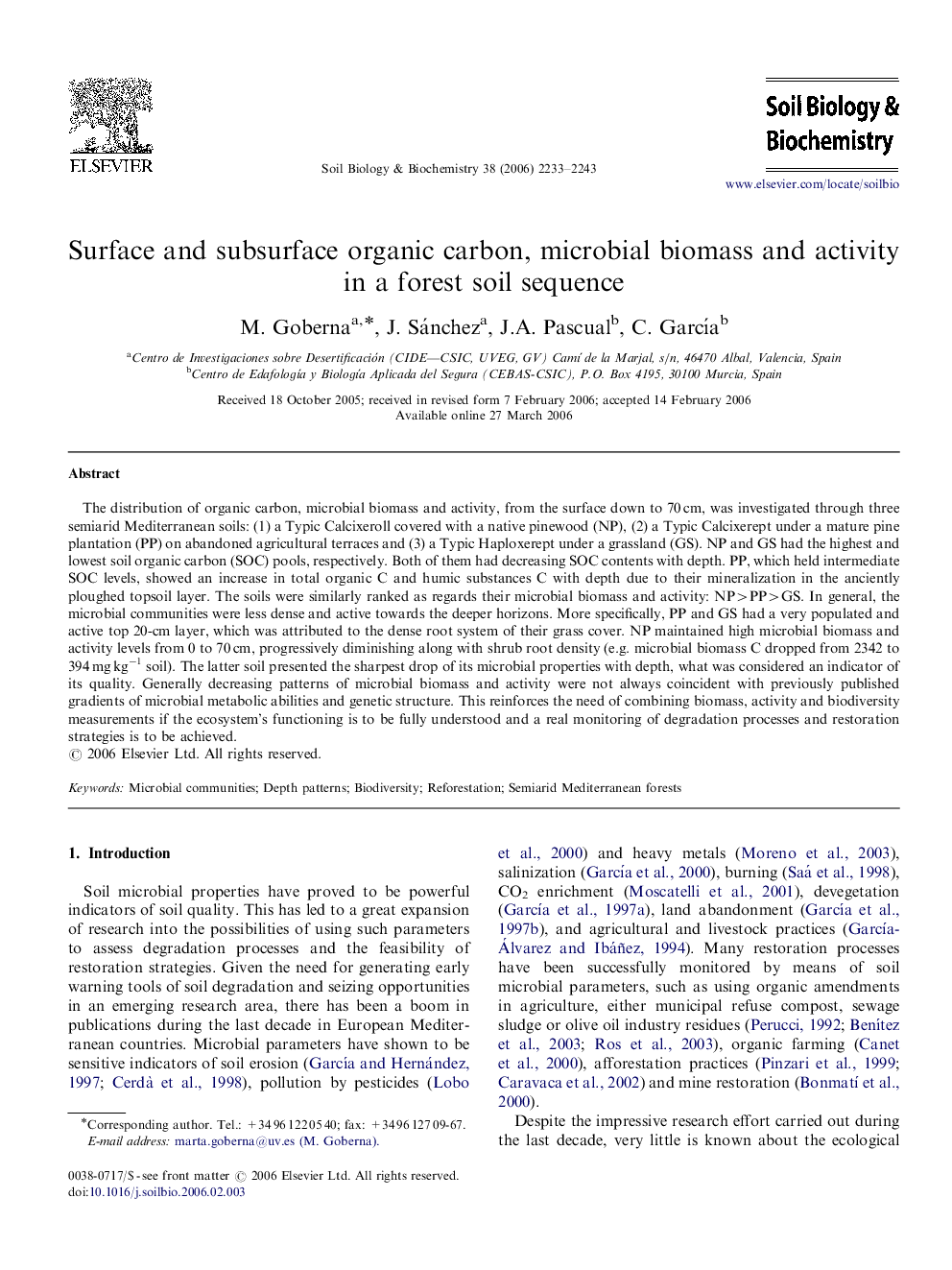| Article ID | Journal | Published Year | Pages | File Type |
|---|---|---|---|---|
| 2027189 | Soil Biology and Biochemistry | 2006 | 11 Pages |
The distribution of organic carbon, microbial biomass and activity, from the surface down to 70 cm, was investigated through three semiarid Mediterranean soils: (1) a Typic Calcixeroll covered with a native pinewood (NP), (2) a Typic Calcixerept under a mature pine plantation (PP) on abandoned agricultural terraces and (3) a Typic Haploxerept under a grassland (GS). NP and GS had the highest and lowest soil organic carbon (SOC) pools, respectively. Both of them had decreasing SOC contents with depth. PP, which held intermediate SOC levels, showed an increase in total organic C and humic substances C with depth due to their mineralization in the anciently ploughed topsoil layer. The soils were similarly ranked as regards their microbial biomass and activity: NP>PP>GS. In general, the microbial communities were less dense and active towards the deeper horizons. More specifically, PP and GS had a very populated and active top 20-cm layer, which was attributed to the dense root system of their grass cover. NP maintained high microbial biomass and activity levels from 0 to 70 cm, progressively diminishing along with shrub root density (e.g. microbial biomass C dropped from 2342 to 394 mg kg−1 soil). The latter soil presented the sharpest drop of its microbial properties with depth, what was considered an indicator of its quality. Generally decreasing patterns of microbial biomass and activity were not always coincident with previously published gradients of microbial metabolic abilities and genetic structure. This reinforces the need of combining biomass, activity and biodiversity measurements if the ecosystem's functioning is to be fully understood and a real monitoring of degradation processes and restoration strategies is to be achieved.
